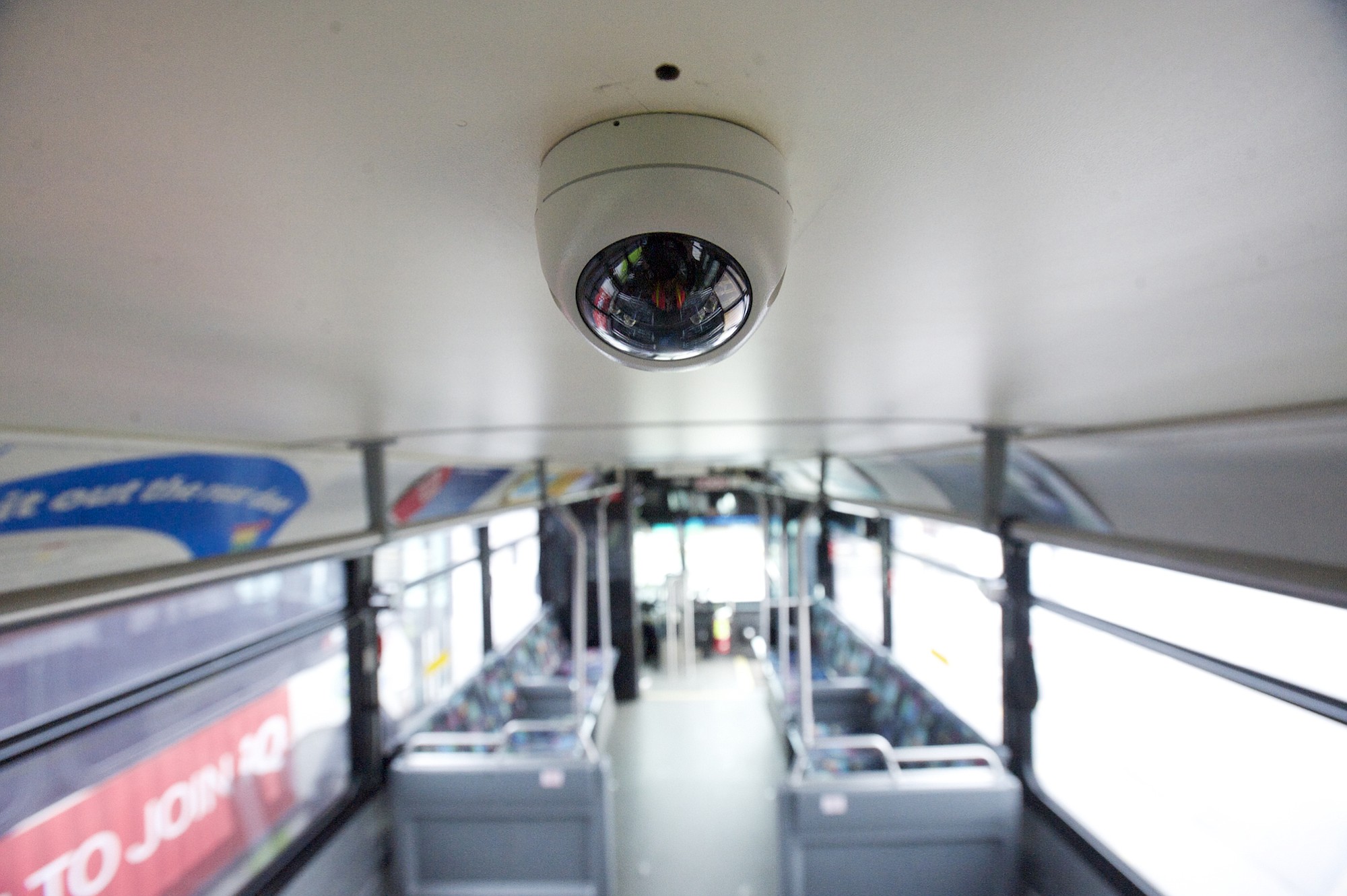When a red, two-door car nearly side-swiped a C-Tran bus on Southeast Mill Plain Boulevard in late September, the agency saw it from every angle.
As the bus traveled west on Mill Plain, the car pulled out from Northeast 104th Avenue, directly in front of the bus, coming within inches of its front end. The bus driver slammed the brakes and swerved left, sending passengers lunging forward or grabbing onto something to keep from falling out of their seats. The car drove away, seemingly oblivious to the near-miss.
As C-Tran field operations manager Bob Medcraft reviewed video of the incident recently in his office, he paused the clip at the moment the car began to pull away from the bus. Medcraft zoomed in, clearly revealing the car’s license plate — something that wouldn’t have been possible a few months ago.
“It’s amazing how important that is for liability reasons,” Medcraft said, though no injury claims were filed as a result of that incident.
C-Tran this fall completed a major overhaul of its on-board surveillance cameras, replacing an old, clunky system officials said was long overdue for an upgrade. The new system puts 12 cameras on each fixed-route bus, some high definition, recording up to 33 frames per second inside and out. Each paratransit C-Van vehicle now has eight cameras. With the old surveillance system, each vehicle was equipped with only five or six cameras, according to C-Tran.
The $1.9 million upgrade — more than half the cost funded by a federal grant — creates a much more efficient process for accessing and viewing surveillance videos, segments of which are pulled several times per day for various reasons, Medcraft said. And the system installed by Apollo Video Technology has capabilities that go far beyond video, he said.
The system also tracks the location and speed of every bus. It records data every time a driver applies the brakes and turn signals, among other things. It flags an “event” any time a bus experiences a sudden change in direction or movement, then automatically downloads a video clip of that incident when the vehicle returns to C-Tran headquarters.
“It’s collecting a lot of data we never collected before,” Medcraft said. “Every little bump in the road, it’s recording that. It’s amazing.”
All of that new data has prompted talks with C-Tran’s union-represented drivers about what the information can and cannot be used for. C-Tran management has long agreed not to use on-board cameras for “fishing” — that is, arbitrarily pulling video to look for driver violations. But if a driver is observed doing something wrong when a clip is viewed for another reason, that’s considered fair game and can be addressed, said C-Tran Director of Operations Lynn Halsey.
Video is usually downloaded for mundane reasons, Medcraft said, such as customer questions or complaints when someone says a bus passed by without picking them up, for example. The cameras are also used to review all accidents, and sometimes help with police investigations.
The new surveillance system downloads video wirelessly. The old system used multiple types of hard drives, which had to be manually carried from a bus to a docking station at C-Tran’s administrative offices to be viewed. Buses are now equipped with 2-terabyte hard drives to store video for 30 or more days even if it’s never reviewed. (A terabyte is equal to 1,000 gigabytes of data, or 1 million megabytes.)
At times, C-Tran cameras have captured crashes or crimes that had nothing to do with the bus, but happened to be nearby. The agency works closely with the Vancouver Police Department and other jurisdictions, and will continue to do so, Halsey said.
“The cameras are just sort of an extension of that,” he said.
The new system will go a long way in reducing liability costs, Medcraft said. In the Mill Plain example, C-Tran could have contacted the driver if he or she were responsible for an injury claim. In another recent case, a man complained that his car was hit by a C-Tran bus. When the agency reviewed the video, it turned out that the man drove his car out of a driveway and into the side of the bus.
“If we’re responsible, we’re responsible,” Medcraft said. “But if we’re not responsible, we want to make sure we don’t pay for something we’re not responsible for.”




